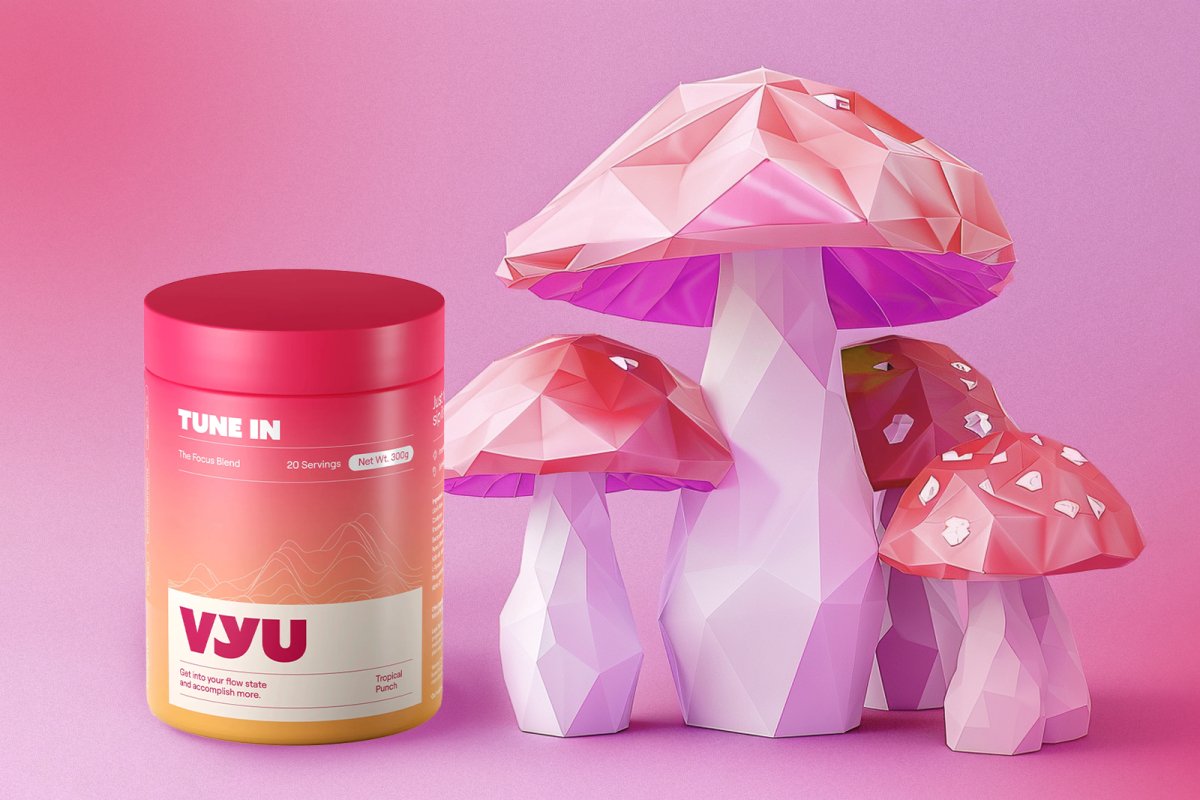

Best Way to Consume Lion's Mane Mushroom
Published:
Updated:
Adaptogenic mushrooms like lions mane have become the buzz in the wellness space. Now, while this mushroom has been fairly popular, you cant help but wonder what is the best way to take lions mane mushrooms.
Well, in this small guide, we have gathered the best ways to consume lions mane mushroom depending on your taste and goals, from cooking it fresh to seeping it in teas or using it in smoothies and drinks through a powdered drink.
Below, youll find a comprehensive guide on this mushroom, its health benefits, and some sample recipes and methods to bring lions mane into your diet in no time. We have a few things to unpack, so lets start by breaking down the mushroom itself.
Key Takeaways
- Lions mane is a mushroom known in both traditional medicine systems and the wellness industry, being a well-documented source of vitamins and minerals.
- Some health benefits of this mushroom include being a high-quality source of different vitamin Bs, like thiamine, riboflavin, and niacin. It could also support cognitive enhancement or support your immune system.
- There are different presentations for lions mane, including fresh mushrooms, dried mushrooms, or powders.
- Some of the best ways to try lions mane are by pan frying it or sauting it, making teas by seeping the powder or dried mushroom, or mixing up drinks like smoothies with premade powdered drinks like TUNE IN.
Introduction to Lion's Mane Mushroom
Before we move to the best way to consume lions mane, lets circle back to what this mushroom is and where it comes from.
Lions Mane, known by its scientific name as Hericium Erinaceus, is a mushroom thats native mostly to North America, Europe, and Asia. It is known because of its large, white, and fluffy appearance, similar to a lions fur.
This mushroom originally grows on trunks of dead hardwood trees and is part of ancient wellness practices, like traditional Chinese medicine. In these systems, lions mane is known to help with gut-related issues and handle stress or insomnia. This is due to how Chinese medicine relates these symptoms to a low qi (life energy force).
Nowadays we also have a scientific backup to understand how this mushroom works, mostly which vitamins, minerals, and different mechanisms activate in our body to support our general health.
Benefits of Lion's Mane Mushroom
Lions mane has plenty of benefits for our daily tasks. That said, two specific benefits can support your overall health: cognitive enhancement and immune system support. Lets take a quick look at them.
Cognitive Enhancement
One of the main benefits of trying this ancestral mushroom includes supporting your cognitive functions, which, in simpler terms, helps you with mental tasks like memory and visual retention and generally improves cognitive functions.
This study mentioned how lions mane helped patients from the study in three different kinds of mental tests and overall boosted their cognitive functions. The researchers even recommended the use of this mushroom as a safe and convenient method for dementia prevention as well.
Immune System Support
Lions mane could also play a pivotal role in supporting a healthy immune system. Researchers in this study found that the mushroom could help maintain the general health of the intestinal immune system by enhancing the activity and effectively regulating mucosal activity in the intestine region.
By using these immunomodulatory properties, scientists concluded that Lions Mane could help regulate and boost immune activity and overall aid with the continuous health of our system.
Different Methods of Consuming Lion's Mane
Now, you can get this mushroom into your diet through several forms, depending on how and when youd like to consume this mushroom. While some of them might require a little bit more creative juice, others are as simple as taking a capsule each morning with your breakfast.
Lets take a quick look at some of the easiest ways of trying this mushroom.
Fresh Lion's Mane Mushroom
One of the most traditional ways to consume this mushroom is fresh, mainly if you want to enjoy its unique flavor or texture. You can get it in apothecaries or Asian markets, and for best results, youll want to slice it vertically to preserve its seafood-like texture.
The most popular way to eat them is by sauting or roasting the mushroom, thanks to its meat-like texture, but well go into further detail on the recipes later in this article.
Lion's Mane Powder
Now, using lions mane through a powder is a versatile form that can allow you to add this ingredient to many dishes or drinks, pre-workout, or with a snack. If you dont like the mushroom flavor, you can try a chai latte or drinks with different spices to help with the flavor.
You can also mix the powder with smoothies, coffee, tea, or even hot water, or if that type of flavor is not something youd like, powdered drinks have an alternative to that umami, seafood flavor.
Lion's Mane Capsules
If flavor is not something youd like, you can skip the powder and simply try capsules. These are a pretty convenient way to add lions mane into your diet, as you dont need the taste but you can enjoy its benefits. Capsules also provide a pre-measured, concentrated dose of this mushroom, making it easy to consume regularly.
Lion's Mane Tea
You can make this tea by either steeping dried mushrooms or mushroom powder in hot water. These are easily accessible from Asian markets, apothecaries, or through Internet stores. This method can be a soothing way to enjoy this mushroom, especially if you like herbal infusions or umami-flavored teas.
Lion's Mane Extracts
Lastly, you can also try lions mane extract, which uses a concentrated form of this mushroom. These are often available in liquid form, made by suspending the mushroom in either alcohol or mediums like oil.
You can add these to different foods and beverages or have them sublingually. Extracts are a fairly potent way to consume this ingredient, but you might still get a strong mushroom and umami-like aftertaste.
How to Prepare Lion's Mane Mushroom
Now that youve decided to try this mushroom, there are three main ways wed recommend to prepare this delicious and functional ingredient.
Cooking with Fresh Lion's Mane
Preparing lions mane is not as complicated as it might seem at first glance. As we mentioned before, it is important to use this mushroom fresh, whether you take it with other food or as the main ingredient.
Lets start with the preparation. First, youll want to clean the ingredients thoroughly, including using a soft brush to remove any dirt or debris. Then slice them and fry them in a pan with a mix of olive oil and butter, seasoning them with salt, pepper, and garlic powder.
Some people also like adding them to stews or soups; just add them to your soup or stew as you would any other mushrooms like Enoki or Shiitake.
Making Lion's Mane Tea
Lions mane tea can be a pretty good alternative for herbal and tea lovers. You can do it by steeping the dried mushroom or powder in hot water. To start this, boil the water and add them to your favorite cup.
If you are using dried mushrooms, break them into small pieces and add them to the water. Then, let them steep for about 15 to 20 minutes. If you want a stronger flavor, you can also simmer the mushrooms in the water directly and then let them steep for a while.
If you are using powder, youll have to strain the mixture before drinking the tea. Just add it and stir the powder into hot water until it dissolves completely. You can then add honey, lemon, or a pinch of cinnamon to taste.
This tea is very soothing and can be taken before bed, especially for afternoon tea lovers.
Incorporating Lion's Mane Powder into Recipes
Lastly, if making tea or that umami flavor is not something youd like, you might be better with a powdered drink that is versatile, and delicious, and can incorporate lions mane and other adaptogenic mushrooms into the mix: TUNE IN.
This drink has no caffeine, is low-calorie, and has some nootropic and adaptogenic ingredients like lions mane, cordyceps, ashwagandha, Rhodiola rosea, alpha GPC, vitamin B, and TeaCrine. Besides being delicious, it can boost your focus, memory, energy, and other key brain cognitive functions like recall.
You can get this drink in two tasty presentations: Pink Lemonade and Tropical Punch. You can add them to water, juice, and drinks or try them in different recipes like smoothies, lattes, or even infusions to mix up your daily mushroom intake. Best of all, these are all-natural, gluten, nut, soy, corn, and dairy-free.
Recommended Dosages and Best Practices
While there is no definitive answer on how much lions mane you should take, there are a few tips and general guidelines on getting the right amount, depending on your body. Some factors for these include a persons weight, metabolism, age, and current health conditions.
Because of that, we recommend starting a small dose and slowly incrementing it as you feel the results every two weeks. If you are taking a capsule or using powder or tea, you can start by taking a single capsule or a teaspoon, then changing to two capsules or a tablespoon each day.
This method is called microdosing, and it can be helpful when starting a new supplement as it can help you listen to your bodys needs and also let you know the dosage you need. Remember to always ask your healthcare provider before starting any supplement as well.
Potential Side Effects and Precautions
In general, lions mane mushroom is considered safe and well-tolerated by many, but there can be a few potential side effects to be aware of. Some people might suffer from discomfort in the gastrointestinal area, especially if they are sensitive to this mushroom in large quantities.
Other users might even feel strong bowel movements or bloating, depending on how they react to this ingredient.
While rare, some people might also present allergic reactions like skin rashes or difficulty breathing. Because of that, methods like microdosing are key to understanding and observing how your body reacts. Remember to always speak with your healthcare provider before you start any supplement.
Final Thoughts
Weve come to the end of our guide on the best way to consume lion's mane mushroom, going through some fresh mushroom recipes, to teas, and soups, to the easiest way with the delicious and versatile TUNE IN.
We took a quick look at what this mushroom is and how it works; it has plenty of vitamins and minerals and two important health benefits, including supporting your immune system and health, helping with cognitive functions, and even aiding in preventing dementia.
Remember that lions mane can be used as a tea, but also in plenty of delicious recipes like smoothies, teas, or infusions, without needing to have a strong umami (sea algae) flavor with powdered drinks like TUNE IN.
Best Way to Consume Lion's Mane Mushroom: FAQs
What is the Most Effective Way to Take Lions Mane?
The most effective way to take lions mane is through a powdered drink thats versatile in several recipes and has little to no mushroom taste, like TUNE IN. This way, you can try different recipes and drinks without needing to have a strong seafood-like tone.
Should You Take Lions Mane Every Day?
Yes, you can take lions mane daily, which is recommended if you want to experience its full benefits in the long term. It's often recommended to take it at least 3 to 4 weeks and tweak the dosage as you see fit, depending on your wellness goals.
What are the Negative Side Effects of Lions Mane?
While lions mane is generally considered safe, there are few known negative side effects. Mostly, people who have allergies or sensitivities to mushrooms should always proceed with caution, and always consult a healthcare professional before adding it to their diet.
VYU Blog Disclaimer
The information provided on the VYU blog is intended solely for informational and entertainment purposes. It should not be used as a substitute for professional medical advice, diagnosis, or treatment.
Always seek the advice of your physician or other qualified health provider with any questions you may have regarding a medical condition or treatment and before undertaking a new healthcare regimen. Never disregard professional medical advice or delay in seeking it because of something you have read on this website.
For more information, check out our FAQs and contact page.
Blog posts
-

Host Defense vs. Om Mushrooms vs. VYU
Compare Host Defense, Om Mushrooms, and VYU for your health journey. Find out which offers the best blend of taste and benefits. Elevate your wellness today! -

Genius Mushrooms vs. Om Mushroom vs. VYU
Learn why VYU is the superior choice for functional beverages, offering exceptional taste and health benefits to boost your mental performance -

Om Mushrooms vs. Four Sigmatic vs. VYU
Compare Om Mushrooms, Four Sigmatic, and VYU for your health journey. Choose the ideal beverage to boost your wellness today!
Sign up to our productivity newsletter
and get 10% off your first order.



